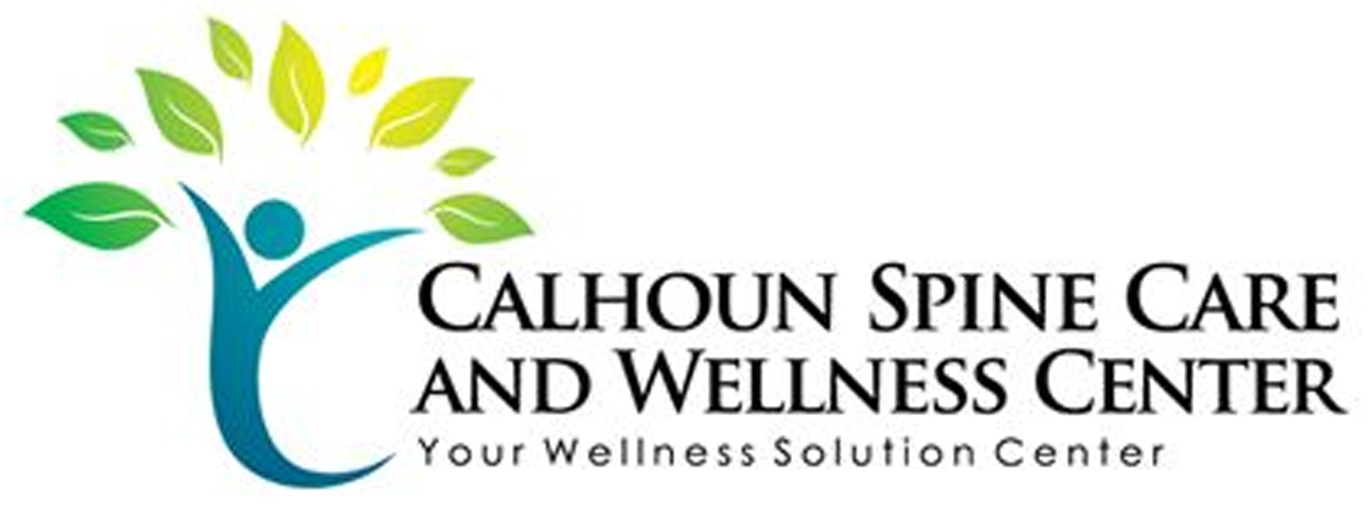You might wonder how adjustments can greatly enhance your mobility and flexibility. By addressing misalignments and releasing tension in soft tissues, these adjustments can improve your joint function and ease any discomfort you may be experiencing. This process not only allows for smoother movement but also plays an essential role in preventing injuries and ensuring that you maintain an active lifestyle. As you consider the impact of these adjustments, you'll find there's much more to explore about how they contribute to your overall well-being and performance.
Understanding Body Alignment
Understanding your body alignment is essential for enhancing mobility and flexibility. When your body is properly aligned, it allows for ideal movement patterns, reducing strain on your muscles and joints. This alignment influences how you perform everyday activities, whether you're exercising, sitting at a desk, or simply walking.
To assess your body alignment, start by checking your posture. Stand tall with your feet shoulder-width apart, and guarantee your ears, shoulders, hips, knees, and ankles are in a straight line. If anything feels off, it could indicate muscular imbalances or structural issues that need addressing.
These misalignments can lead to discomfort and restrict your range of motion, making it harder for you to stay active. You can also pay attention to how you move. Are you favoring one side of your body? Do you experience pain during specific activities? These clues can help you identify areas where your alignment might be impacting your mobility.
Incorporating exercises that promote proper alignment, like yoga or Pilates, can greatly improve your flexibility and overall movement quality. They emphasize core stability and body awareness, helping you develop a better understanding of your own mechanics.
Role of Soft Tissue
Soft tissue plays an essential role in your overall mobility and flexibility.
Understanding its structure and how it responds to adjustments can help you maximize your range of motion.
Soft Tissue Structure
When it comes to mobility and flexibility, the role of soft tissue structures can't be overstated. Soft tissues, including muscles, tendons, ligaments, and fascia, provide the necessary support and elasticity for your body's movements. These structures absorb shock, distribute stress, and enable smooth shifts during physical activities.
Think of soft tissue as the framework that holds everything together. Muscles contract and relax to create movement, while tendons connect muscles to bones, allowing force to be transmitted effectively. Ligaments, on the other hand, stabilize joints by connecting bones to one another, ensuring that your movements are safe and controlled.
Fascia envelops muscles and organs, facilitating fluid motion and reducing friction.
Maintaining the health of these soft tissue structures is essential for ideal mobility. Tight or injured soft tissues can restrict movement, making it difficult to achieve full range of motion. Regular stretching, strengthening exercises, and proper hydration can enhance the quality of these tissues, promoting greater flexibility.
Tissue Response to Adjustments
Many people underestimate the vital role soft tissue plays in response to adjustments. When you receive an adjustment, the surrounding soft tissues, including muscles, ligaments, and fascia, react markedly. These tissues help stabilize and support your joints, and their response can directly influence your mobility and flexibility.
After an adjustment, soft tissues undergo a process of adaptation. They may experience changes in tone and tension, which can enhance your overall range of motion. As the adjustment aligns your spine or joints, the soft tissues can begin to relax, reducing muscle tightness and discomfort. This improved state allows your body to move more freely, promoting better overall function.
Moreover, the circulation of blood and nutrients to these tissues improves, aiding in recovery and reducing inflammation. When soft tissues are in a healthy state, they can better support joint function, which is imperative for maintaining mobility.
Benefits of Release Techniques
How can release techniques enhance your overall well-being? These techniques focus on the soft tissues in your body, helping to alleviate tension and improve circulation.
When you incorporate release techniques like myofascial release or trigger point therapy, you're targeting tight muscles and fascia, allowing them to relax and function effectively.
You might notice an immediate increase in mobility as the restrictions in your soft tissues diminish. This not only helps with flexibility but can also reduce discomfort and pain associated with muscle tightness.
By releasing these tensions, you're promoting better alignment and function throughout your body.
Moreover, release techniques can enhance your recovery after workouts. When your muscles are less restricted, they're more efficient at repairing themselves, leading to improved athletic performance over time.
You'll find that you can move with greater ease and confidence in your activities.
Benefits of Chiropractic Adjustments
Chiropractic adjustments offer several key benefits that can notably improve your well-being.
You'll likely notice enhanced joint function and increased range of motion, making everyday activities easier.
Plus, these adjustments can lead to better muscle relaxation, helping you feel more at ease in your body.
Improved Joint Function
Ideal joint function plays an essential role in overall mobility and comfort, and chiropractic adjustments can greatly enhance this aspect of your health.
By realigning misaligned joints, these adjustments promote optimal movement patterns and help you feel your best.
Here are three key benefits of improved joint function through chiropractic adjustments:
- Increased Range of Motion: When your joints are properly aligned, you'll notice a significant improvement in your ability to move freely. This means you can enjoy activities like stretching, bending, and turning without discomfort.
- Reduced Pain and Discomfort: Misaligned joints can lead to pain and stiffness. Chiropractic adjustments help alleviate these issues, allowing you to move with ease and enjoy daily tasks without the nagging discomfort.
- Enhanced Stability and Balance: Proper joint function contributes to better stability and balance. With adjustments, you'll feel more grounded and confident in your movements, reducing the risk of falls or injuries.
Incorporating regular chiropractic adjustments into your routine can truly elevate your joint function, making it easier for you to engage in the activities you love.
Enhanced Muscle Relaxation
Experiencing enhanced muscle relaxation is one of the significant benefits you can gain from chiropractic adjustments. When your spine is properly aligned, it helps reduce tension in the surrounding muscles. You'll notice that tightness and discomfort begin to dissipate, allowing your body to feel lighter and more at ease.
Chiropractic adjustments target the root cause of muscle tension, often stemming from misalignments or joint dysfunction. By restoring proper alignment, you not only improve your overall posture but also create an environment where your muscles can relax. This process eases strain and allows for better blood circulation, which brings more oxygen and nutrients to your muscles.
Moreover, regular adjustments can help break the cycle of chronic tension. You might find that with consistent chiropractic care, your muscles become less reactive to stressors, leading to a more relaxed state overall. This enhanced muscle relaxation contributes to improved recovery after physical activity and can help you manage stress more effectively.
Ultimately, when your muscles are relaxed, you'll feel more comfortable in your own body, enhancing your overall quality of life. Embrace the benefits of chiropractic adjustments and enjoy the relief that comes with enhanced muscle relaxation.
Increased Range of Motion
When your spine is aligned properly, you can enjoy an increased range of motion that enhances your overall mobility. Chiropractic adjustments help realign your spine, which can directly improve your flexibility and movement.
With a better range of motion, you'll find daily activities become easier and more enjoyable.
Here are three key benefits of experiencing an increased range of motion through chiropractic adjustments:
- Improved Performance: Whether you're hitting the gym or engaging in sports, better mobility allows you to perform exercises with greater efficiency and effectiveness.
- Reduced Injury Risk: When your joints and muscles function efficiently, you lower the chances of strain or injury. An increased range of motion helps your body absorb shocks and stress better.
- Enhanced Daily Activities: Everyday tasks like bending, lifting, or reaching become smoother and less taxing on your body. You'll feel more agile and capable of tackling your routine.
Integrating chiropractic adjustments into your wellness plan can lead to significant improvements in how you move.
Don't underestimate the power of an aligned spine for boosting your range of motion!
Importance of Joint Mobility
Joint mobility plays an essential role in your overall physical health and well-being. When your joints move freely and efficiently, you can perform daily activities with ease and confidence. Good joint mobility enhances your ability to bend, twist, and reach, making everything from simple household chores to complex athletic movements more manageable.
Without adequate mobility, you risk developing compensatory movement patterns that can strain other parts of your body. This may lead to discomfort or injury over time. Maintaining joint mobility helps you avoid these pitfalls, allowing you to stay active and engaged in life.
It also plays a significant role in your athletic performance. Whether you're running, swimming, or participating in team sports, your range of motion directly influences your speed, agility, and power.
Moreover, joint mobility contributes to better posture and alignment. When your joints function efficiently, your body can maintain its natural alignment more easily, reducing unnecessary stress on muscles and ligaments. This not only enhances your physical appearance but also promotes better overall body mechanics.
Incorporating mobility exercises into your routine can lead to significant improvements. Stretching, yoga, and specific mobility drills can help keep your joints supple, improving your performance in various activities.
Effects of Muscle Tension
Muscle tension can greatly impact your overall mobility and flexibility. When your muscles are tight or tense, they can restrict your range of motion and make movement uncomfortable. This tension often arises from stress, poor posture, or repetitive movements.
Addressing muscle tension is essential for improving your physical performance and overall well-being.
Here are three key effects of muscle tension:
- Reduced Flexibility: When your muscles are overly tight, they can limit the elasticity needed for full range of motion. This can make it difficult to perform everyday activities, such as bending down to tie your shoes or reaching for items on a high shelf.
- Increased Risk of Injury: Tight muscles can lead to imbalance and improper movement patterns. When your body compensates for this tension, it can result in strains or sprains, particularly during physical activities or exercise.
- Compensatory Pain: Muscle tension often leads to discomfort in other areas of your body. For example, tight hamstrings can cause lower back pain, as the body tries to adjust to the restricted movement.
This compensatory mechanism can create a cycle of tension and pain, further impacting your mobility.
Enhancing Range of Motion
Addressing muscle tension is a vital step toward enhancing your range of motion. When your muscles are tight or restricted, they limit your ability to move freely and comfortably. By focusing on relieving this tension, you release your body's potential to move more fluidly and efficiently. Regular adjustments, whether from a chiropractor or through self-care techniques, can effectively release these tight muscles and promote better alignment.
Incorporating stretching routines into your daily activities can also greatly boost your range of motion. Dynamic stretches, in particular, prepare your muscles for movement while improving flexibility. Try incorporating movements that target the major muscle groups, like hamstrings, quadriceps, and shoulders, to enhance overall mobility.
Additionally, strength training is key to supporting your joints; stronger muscles can help maintain stability and support a greater range of motion.
Don't forget about the importance of hydration and nutrition. Staying well-hydrated helps maintain muscle elasticity, and consuming a balanced diet rich in vitamins and minerals supports muscle health. When your body is nourished and hydrated, it can function efficiently, allowing for improved flexibility.
Finally, pay attention to your posture throughout the day. Poor posture can lead to muscle imbalances, which can restrict your range of motion. By consciously working on maintaining proper alignment, you'll promote better movement patterns and increase your overall flexibility.
Embrace these practices, and you'll notice a remarkable improvement in your range of motion, enabling you to move with greater ease and confidence.
Psychological Impact on Flexibility
Understanding the psychological impact on flexibility can be just as important as physical conditioning. Your mindset plays a vital role in how your body responds to flexibility training. When your mental state is positive, you're more likely to push through discomfort and achieve better results.
Here are a few key psychological factors that can enhance your flexibility:
- Motivation: When you're motivated, you're more inclined to practice flexibility exercises consistently. Setting clear goals can keep your energy high and help you stay focused on your progress.
- Mindfulness: Being present during your stretching routines can greatly improve your results. Mindfulness allows you to tune into your body, understand its limits, and gently push those boundaries. This awareness can lead to better body control and ultimately enhance your flexibility.
- Stress Reduction: High stress levels can lead to muscle tension, making it difficult to achieve ideal flexibility. Engaging in relaxation techniques, such as deep breathing or visualization, can lower stress and help your muscles relax.
Techniques Used in Adjustments
Building on the connection between mindset and physical conditioning, various techniques can greatly enhance your mobility and flexibility through adjustments. One popular method is manual therapy, which involves hands-on manipulation of soft tissues and joints. This technique aids in releasing tension and restoring balance, allowing you to move more freely. Through targeted pressure and stretching, you can feel immediate relief and a heightened range of motion.
Another effective approach is proprioceptive neuromuscular facilitation (PNF). In this technique, you'll engage in a series of stretching and contracting exercises, often working with a partner or therapist. PNF not only improves flexibility but also strengthens the muscles involved, giving you a thorough adjustment that enhances your overall mobility.
Active release techniques (ART) focus on identifying and treating specific areas of tightness or injury. By applying pressure while moving through a range of motion, ART breaks up adhesions and improves circulation, promoting healing and increased flexibility. You'll often notice a significant difference in how your body feels after just one session.
Finally, myofascial release targets the fascia, the connective tissue surrounding your muscles. By applying gentle sustained pressure, you can release restrictions in the fascia, leading to improved mobility and a greater sense of ease in your movements.
Incorporating these techniques into your routine can lead to profound changes in your physical capabilities, allowing you to enjoy a more active and fulfilling lifestyle.
Long-Term Benefits for Health
The long-term benefits of improved mobility and flexibility extend far beyond just physical comfort; they can greatly enhance your overall health and well-being.
When you prioritize adjustments that boost your mobility, you're not only reducing discomfort but also fostering a healthier lifestyle. Here are three key benefits you can expect:
1. Reduced Injury Risk: Greater flexibility allows your muscles and joints to move through a fuller range of motion. This adaptability helps prevent strains and injuries, especially during physical activities or daily tasks.
By keeping your body limber, you'll be less likely to suffer from common ailments.
2. Enhanced Posture: Improvements in mobility often lead to better posture. When your muscles are flexible, your body can align more naturally, reducing the strain on your spine and surrounding tissues.
Good posture can alleviate chronic pain and prevent long-term issues, contributing to your overall health.
3. Improved Circulation: Regular adjustments that enhance flexibility can also lead to better blood flow. When your body moves freely, oxygen and nutrients are more effectively delivered to your muscles and organs, which aids in recovery and overall health.
Improved circulation can also bolster your immune system, helping you fend off common illnesses.
Conclusion
In summary, adjustments play an essential role in enhancing your mobility and flexibility. By improving body alignment, relieving muscle tension, and promoting joint health, you can experience smoother movement and increased range of motion. Regular adjustments not only benefit your physical capabilities but also contribute to your overall well-being. Embracing these techniques helps you perform daily activities with ease and enjoy a more active lifestyle. So, consider incorporating adjustments into your routine for lasting health benefits!



